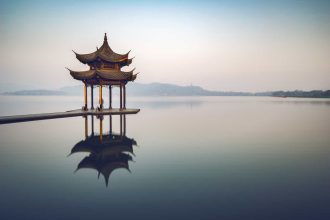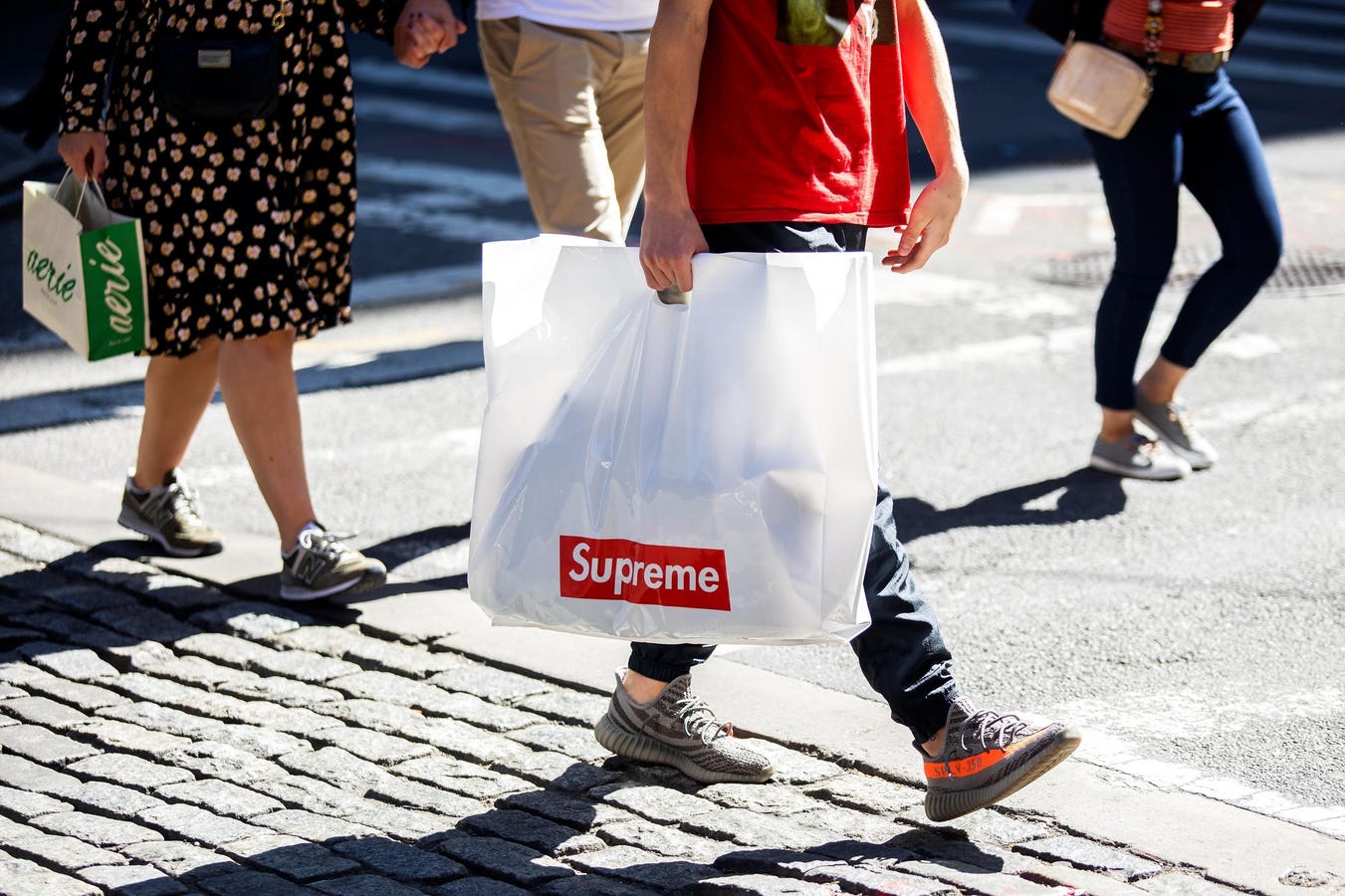Supreme, the once-hot streetwear brand that’s fallen on hard times under VF Corp. leadership, is being acquired by EssilorLuxottica of eyewear fame for $1.5 billion in an all-cash deal, regulatory approvals pending.
That’s a sharp decline from the $2.2 billion VF acquired the brand for in December 2020, but which ended up costing $2.4 billion when VF completed the acquisition in the fourth quarter fiscal 2021.
Supreme’s unique business model based on weekly drops and limited edition releases never sat well with the traditional model VF’s other brands operate under, including The North Face, Timberland, Vans and Dickies. The cash infusion will help VF pay down some of the $5.3 billion net debt on its balance sheet as of fourth quarter 2024.
“Given the brand’s distinct business model and VF’s integrated model, our strategic portfolio review concluded there are limited synergies between Supreme and VF, making a sale a natural next step,” VF CEO Bracken Darrel said in a statement.
Yet Supreme’s business model could sit as uncomfortably under EssilorLuxottica as it did under VF. And because this will be EssilorLuxottica’s first major foray into the changeable world of fashion, it may be biting off more than it can chew.
Getting Out From Under
VF gets to unload a relatively minor headache so it can attend to even bigger ones, like Vans off 24% from $3.7 billion to $2.8 billion and Timberland dropping 13% from $1.8 billion to $1.6 billion in fiscal 2024. Even its biggest, The North Face, only squeaked out a 2% increase in the past year to reach $3.7 billion. Overall, VF ended fiscal 2024 down 10%, from $11.6 billion to $10.5 billion.
VF doesn’t report Supreme revenues; it hides results under the Other Brand designation. However, in fiscal 2023, when it took a $735 million impairment charge against Supreme, it revealed Supreme dropped 7% from $561.5 million in 2022 to $523.1 million in 2023.
While Darrell reported in the latest earnings call that Supreme ended fiscal 2024 with “strong quarter sales” up low-double digits, his answer to an analyst’s question suggests that growth was largely due to the recent openings of stores in Seoul and Shanghai. It ended the year with 17 stores.
How long those consumers’ early interest in Supreme lasts is anyone’s guess, but streetwear customers are fickle and trend driven. Fashion attorney and law professor Douglas Hand told Vogue Business the EssilorLuxottica acquisition was a “head scratcher,” and added:
“Brands have cool early adopters, then get subsumed by the greater machine of fashion. When the laggards start wearing it all over the place, that’s often when the cool kids know they should be moving onto something else.”
Supreme Falling
That is what appears to be happening to Supreme over the last two years as measured in online search volume by Centric Software’s Centric Market Intelligence service. It finds search volume off nearly 30% from May 2022 through same month this year.
“Supreme faces inevitable challenges,” said the company’s Sanja Becirovic. “By the early 2020s, the brand’s appeal began to wane. The brand that once epitomized exclusivity started to feel…common,” she noted.
Nonetheless, Supreme Founder James Jebbia, who remained with the brand under VF and goes along with it to EssilorLuxottica, said:
“In EssilorLuxottica, we have a unique partner that understands that we are at our best when we stay true to the brand and continue to operate and grow as we have for the past 30 years. This move lets us focus on the brand, our products, and our customers, while setting us up for long-term success.”
Yet, he was equally optimistic when VF took over. “This partnership will maintain our unique culture and independence, while allowing us to grow on the same path we’ve been on since 1994,” he said in a statement at the time.
Trading One Overlord For Another
Supreme has traded one giant corporate overlord for an even bigger one. EssilorLuxottica ended fiscal 2023 just shy of $28 billion (€25.4 billion) with about $14 billion (€13.2 billion) attributed to direct-to-consumer sales, the rest to serving the professional sector.
EssilorLuxottica has unique strengths. It is no laggard when it comes to e-commerce and brick-and-mortar retail. It operates:
- Nearly 3,000 Sunglass Hut stores, over half in the U.S.
- Some 300 Oakley stores – the brand most closely aligned with Supreme – and more than half in the states
- 285 Ray-Ban stores, but fewer than 40 in the U.S.
So managing Supreme’s fewer than 20 retail stores won’t be much of a hurdle, but its business model, which is hooked to quick turnover fashion, may prove as difficult to digest as it was for VF. Yes, eyewear is fashion but trends don’t move as quickly there as they do in t-shirts, shorts and hoodies.
EssilorLuxottica is also a master when it comes to brand licensing so it aligns nicely with Supreme’s experience in collaborations, reaching its pinnacle in 2017 with the Louis Vuitton collab.
EssilorLuxottica is the eyewear partner for many storied luxury brands, including Chanel, Dolce & Gabbana, Giorgio Armani, Versace, Prada, Ralph Lauren and Tiffany. Last year it added Moncler and Jimmy Choo to its portfolio.
But in the case of EssilorLuxottica’s licensing, the power of its eyewear’s appeal comes from the brand licensor. In other words, Chanel carries the load in the sale of its glasses.
Building Supreme Back Up
Now it’s got to build the Supreme brand back up to its previous glory which may not be in its wheelhouse. Of course, Supreme founder Jebbia will do that heavy lifting, but then he couldn’t work his magic under VF and the EssilorLuxottica corporate structure might prove just as limiting despite promises to the contrary.
“With its unique brand identity, fully-direct commercial approach and customer experience – a model we will work to preserve – Supreme will have its own space within our house brand portfolio and complement our licensed portfolio as well,” Francesco Milleri, CEO and Paul du Saillant, deputy CEO, said in a statement.
Centric Software’s Becirovic remains cautiously optimistic and sees opportunities for “innovative cross-brand collaborations.”
However, the value of those collaborations ultimately depends on Supreme getting its mojo back. Now that it’s reached its 30 year anniversary – arguably past its prime in ‘streetwear’ years – and fallen off many hypebeasts’ rader, it will be hard for Supreme to claw its way back up.
Culted’s fashion writer Ollie Cox said it well to Vogue Business. Supreme’s “counterculture narrative feels a bit at odds with billion-dollar acquisitions.”
Note: neither company provided any additional comment upon request.
See also:
Read the full article here





